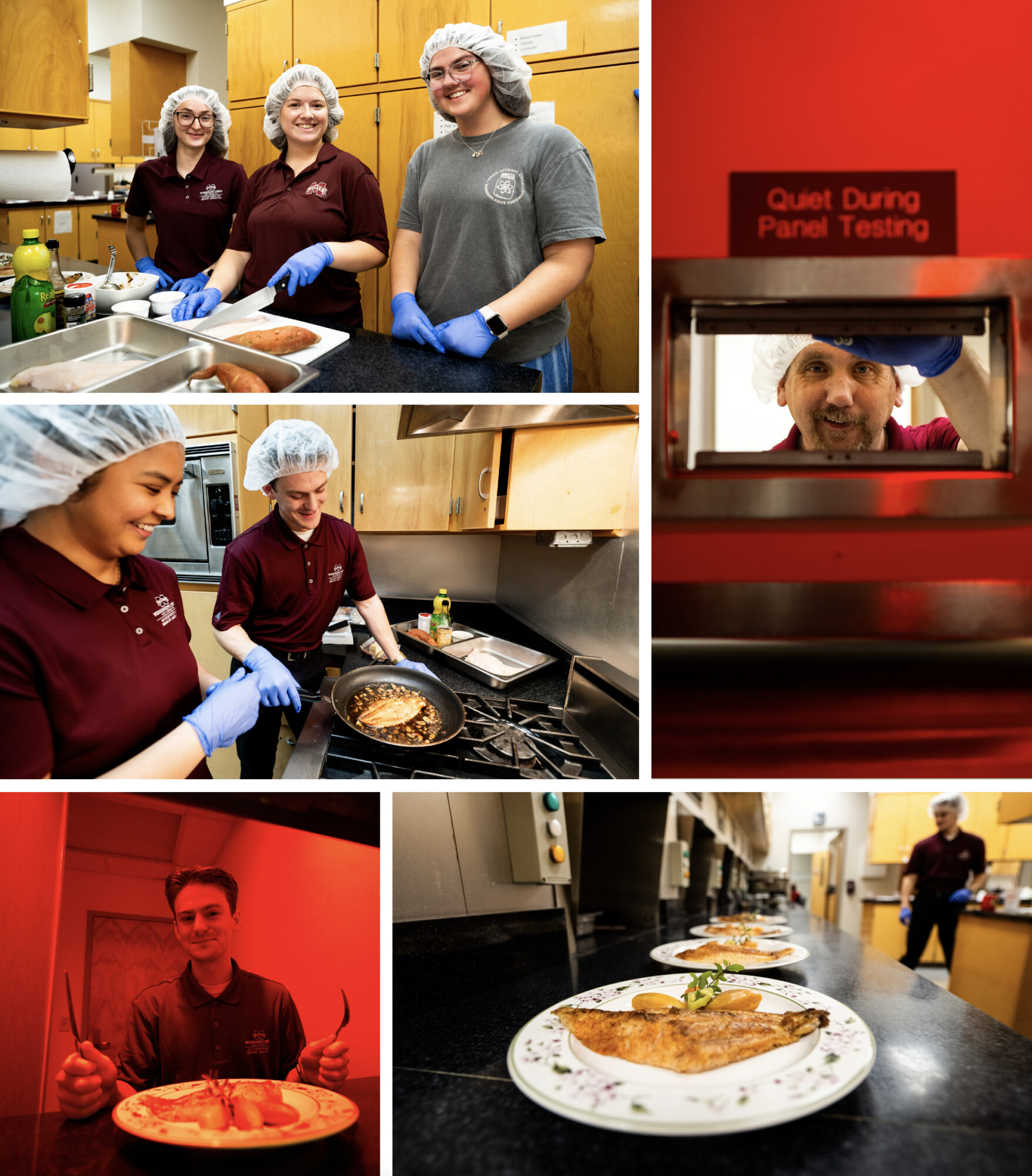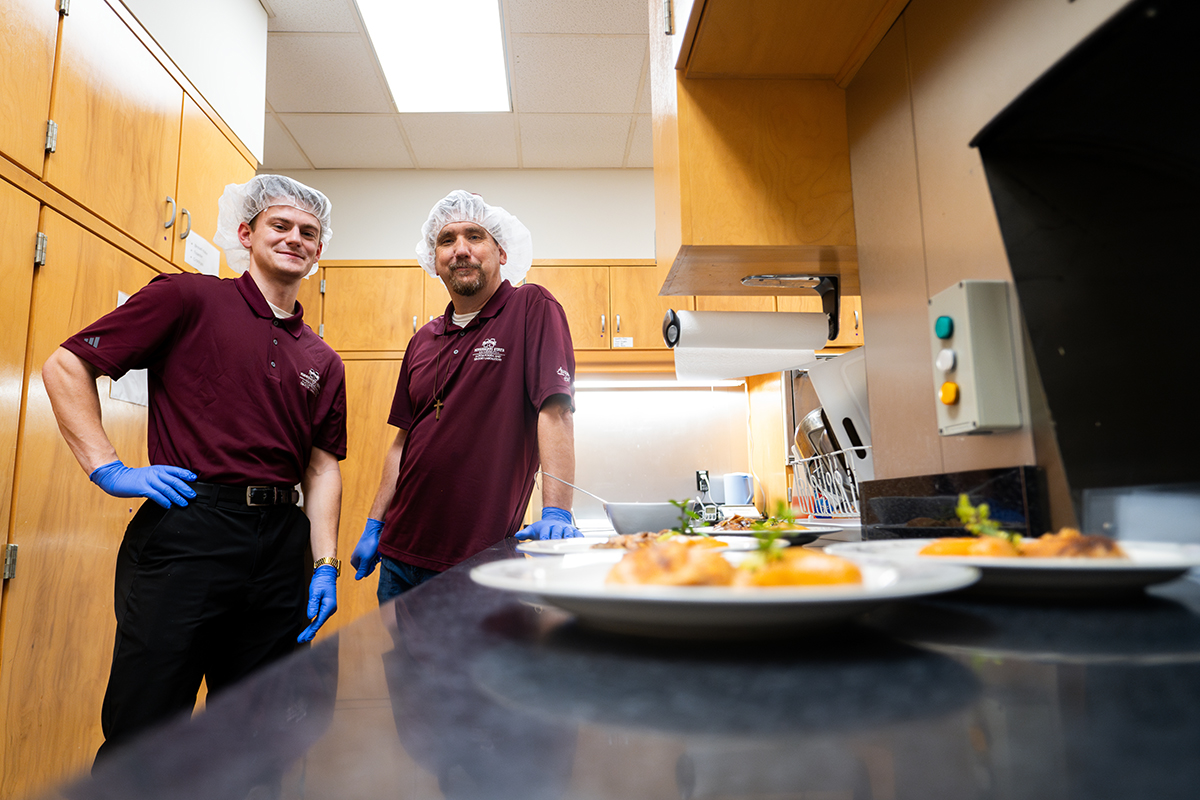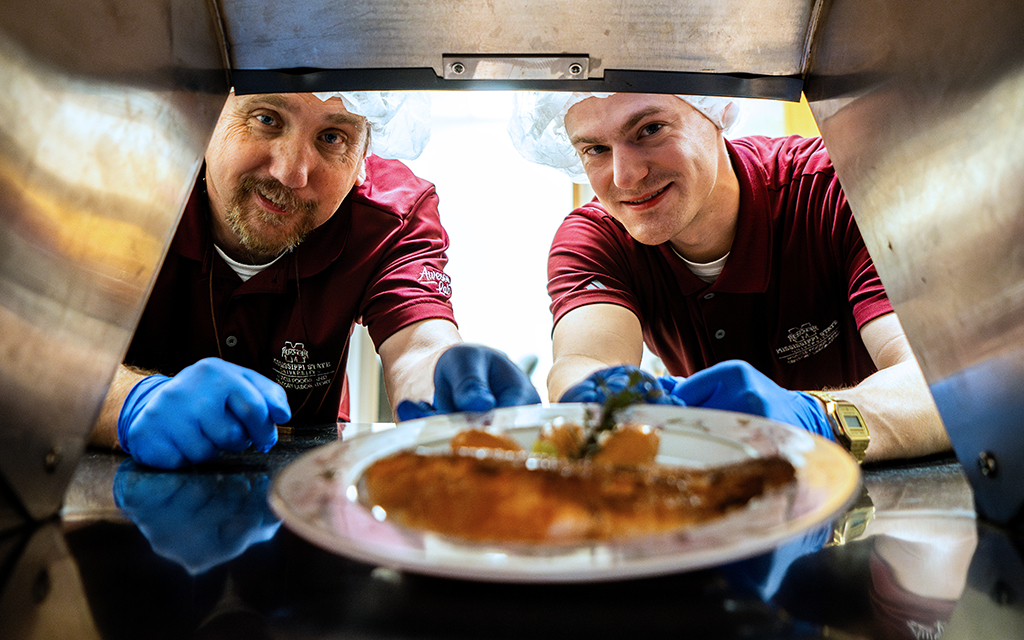We take many things for granted in life: the sun rises in the east, Mississippi has sweltering summers, and our preferred food brands will offer the same experience every time we consume them.
Those first two reliably occur without intervention, but the last—the consistency consumers expect from their routine purchases—gets a boost from Mississippi State University.
At the Muscle Foods and Sensory Laboratory, Mississippi State scientists and researchers are finding ways to help companies lower costs, become more environmentally friendly and produce healthier products while keeping consumers safe and satisfied with their purchases.
Wes Schilling, director of Mississippi State’s newly formed Food Science Innovation Hub, said the lab supports these food-industry goals in two ways: by answering the questions food companies have today and graduating food scientists who will solve industrywide problems tomorrow.
“Our industry partnerships are important for helping us stay on the cutting-edge of what the industry faces, and train students who will be ready to make a difference in the food industry as soon as they graduate,” Schilling said.
“We’re sending our students and our science into the food industry to help make food last longer, taste better and feed the world as the population grows,” he continued.
Increasing shelf-life and reducing point-of-sale food waste—food discarded from stores or restaurants when it is deemed too unsafe or unappealing for consumers—is at the heart of the Muscle Foods and Sensory Laboratory’s mission.

Lab manager Sawyer Smith said MSU students and faculty address these issues by evaluating how changes in ingredients and processing influence consumers’ senses.
“When a company wants to change an ingredient or alter the process they use to package their product, we help them study how those modifications affect consumer perceptions,” said Smith, a 2022 MSU graduate who now is pursuing a master’s with a concentration in food science and technology at the university.
“And it’s not just the flavor,” he continued. “We look at how all the senses—sight, touch, taste, smell and hearing—are affected by the changes.”
Smith explained that sight is often the first hurdle in turning a shopper into a purchaser; if a food doesn’t look appetizing, it’s not going to sell.
“Marketing and perception play a big role in purchasing decisions,” Smith said, noting that in blind taste tests brand-loyal consumers often can’t differentiate between their go-to choice and the competitor.
“It comes down to what shoppers think and what sensory experience they expect when they look at a product,” he continued.
Schilling, who holds the university’s Reed Family Endowed Professorship, said visual appeal is one of the factors producers of muscle foods—the industry term for meat and meat products—must address when evaluating the shelf-life of their products.
“Take red meat, for example,” Schilling said. “People expect it to be red. But overtime, and especially under the lights of a grocery store display, it begins to oxidize and turn brown. It can still be perfectly safe to eat, but a consumer will pass it over for something that looks redder—a quality associated with freshness.”
That particular problem is one Schilling and the Mississippi State lab helped address for Johnsonville, best known for its sausage products.
“We helped then optimize antioxidants to help their sausage stay red, longer,” Schilling explained. “And that one change helped improve the practical shelf life of their product and prevent an edible—but less visually appealing—product from becoming food waste.”

Travis Selby, Johnsonville’s vice president for research and development, said the partnership with Mississippi State University has been a great resource for the Wisconsin-based company. Though it has in-house scientists—including some Bulldog alumni—he said MSU provides much needed outside validation for their findings, as well as additional minds and specialized equipment that can more thoroughly study specific problems.
“Dr. Schilling and his understanding and appreciation for what Johnsonville does, as well as the resources and capabilities that MSU has, keep us coming back to Mississippi State,” Selby explained. “It gives us a fresh set of eyes and an outside perspective to help solve problems.
“The ability to have top-bench research and sensory and processing testing all in one location is very beneficial to us,” he continued. “Partnering with MSU also allows us to network with students for potential internships and job opportunities.”
Schilling said industry partnerships, like the one with Johnsonville, are essential to the continued growth and viability of the Muscle Foods and Sensory Lab by not only keeping faculty in the know with current industry issues but also giving students opportunities for hands-on, applied learning.
“Our students leave with real-world experience on how to conduct studies and analyze results, and that’s what sets our graduates apart,” Schilling said. “And when our alumni have successful careers in the industry, they come back and speak to our students or bring their own projects to our department. It becomes a network, a cycle, that makes us stronger and stronger over time.”
While “muscle foods” is in the name of the lab, both Schilling and Smith are quick to note that it’s not only meat being studied. Students have the opportunity to work on projects from all areas of the food industry—including alternative proteins, produce, and dairy. They also benefit from access to Mississippi State’s robust entrepreneurial support system to develop their own products.
Schilling said he is proud to have Mississippi State positioned as a resource for the food industry, and he is equally proud to know Bulldogs are invested in making quality products that are available and remain accessible for all markets across the country.
“We in the Muscle Foods and Sensory Laboratory are open to working with any type of food product,” Schilling said. “We will work to continue making food last longer, be more nutritious and be of higher quality, Such innovations are important to improve sustainability and help feed the world’s growing population.”
By Susan Lassetter, Photos by Grace Cockrell

Debunking Food-Industry Myths
The U.S. food industry impacts everyone multiple times a day. Still, despite its importance to daily life, misconceptions abound—from how food is grown and transported to its additives and packaging.
Wes Schilling, who holds the Reed Family Endowed Professorship as director of the Food Science Innovation Hub, said people shouldn’t rely on social media or influencers for accurate information about what they eat. Instead, he suggests exploring university and Extension service publications, which contain fact-based, science-backed data, or working with a registered dietitian to better understand their food choices.
Below he tackles five common food myths he has come across in his work.
MYTH: Frozen foods are less nutritious and lower quality than fresh.
The facts: Commercially frozen foods are frozen at such low temperatures that it’s like they’re frozen in time at their fresh state, preserving their quality with little to no effect on the nutritive value.
MYTH: The red liquid in packaged beef is blood.
The facts: The red fluid seen in beef packaging is simply water and myoglobin—a protein that produces a red pigment in the presence of the oxygen contained in the muscle.
MYTH: Natural foods are healthier foods.
The facts: A “natural” label on food simply means that all ingredients in the product were derived from nature. It does not have any bearing on how healthy the product is.
MYTH: Natural flavor compounds are healthier than synthetic flavor compounds.
The facts: There is generally no difference between natural and synthetic flavor compounds. One is derived from nature and the other through chemical processes, but the resulting compounds can be identical.
MYTH: Nut or plant-based drinks are “milk.”
The facts: Milk is an opaque, white fluid that is rich in fat and protein, and secreted by female mammals. Beverages made from soy, oats, almonds or other plants and nuts are produced by soaking and grinding the plant material to create a liquid.


